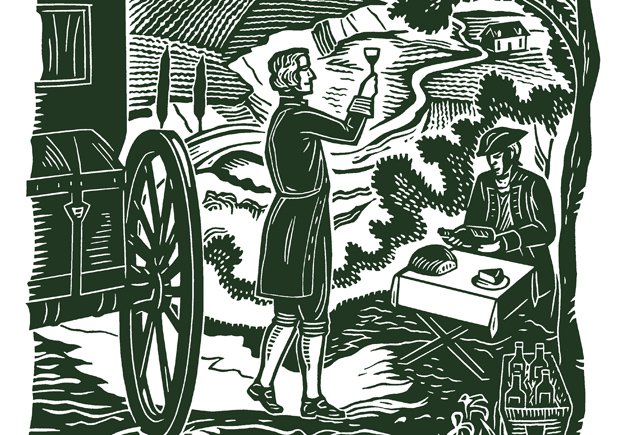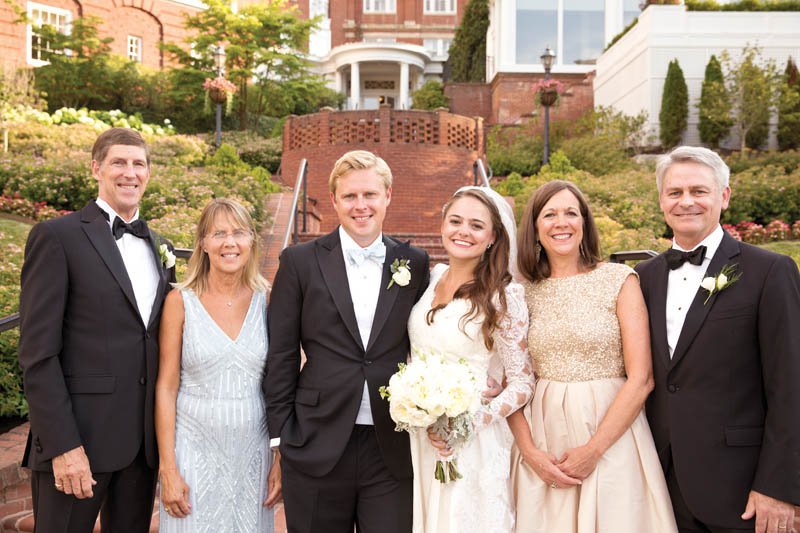A wine-themed exhibit features historic silver, glass and maps—some of the latter related to Thomas Jefferson’s 1787 tour of France’s wine country

A Fondness for the Grape
It started with a tiny silver spoon. When Scott Ballin bought his first piece of antique silver, at a flea market in Geneva “15 or 20 years ago,” he says, he had no idea that he was on his way to becoming a collector. “I connected the fact that these things were handmade—who made it? Who’s seen it? Where has it been?” Now he has hundreds of spoons, not to mention flatware, vessels and more. At some point, he became interested in maps—old ones, by the likes of Mercator and Ortilius and other eminent cartographers. Along the way, Ballin also became a fan of Thomas Jefferson.
Ballin’s collection, which also includes glass, is the basis for the exhibition “Wine: Maps, Silver and Glass of the 16th, 17th and 18th Centuries—with a Special Tribute to Thomas Jefferson, the Wine Connoisseur of the 18th Century,” on view at the Staunton’s R.R. Smith Center for History and Art August 6 to September 26.
A mostly D.C.-based health policy consultant, Ballin is a member of the board of the Staunton-Augusta Art Center, which occupies the Smith Center along with two other nonprofits: the Augusta County Historical Society and the Historic Staunton Foundation. “What we’re trying to do is to get the organizations to do something together, because often people are off in their own little silos,” he says. “I’ve combined wine with history and art, because the Smith Center is the art and history museum.”
Wine is what ties together this exhibit. As Ballin says, “Everybody loves wine, and we’re in wine country.” A sizeable number of the roughly 300 maps he owns depict the wine-growing regions of Europe, so one part of the exhibition will feature 40 of them, mostly French, some of them more than 400 years old (Ballin’s favorite is a 1578 Ortilius map of Burgundy).
The second, more interdisciplinary part of the exhibition includes seven of Ballin’s maps detailing the places Thomas Jefferson visited in his 1787 trip to France’s wine country, including Leon, Avignon, Bordeaux and Burgundy. Jefferson is said to have described the three-and-a-half month trip as the most delightful period of his life, and he took many notes with an eye toward growing wine in his home country.
“He really was the wine connoisseur of Europe,” says Ballin. “He was also sending thousands of bottles of wine back to the U.S., to George Washington—he was basically Washington’s sommelier.”
In addition to those seven maps, the Jefferson component will also feature an arrangement showing what Jefferson’s table must have looked like, with flatware that Ballin says is exactly like a set Jefferson bought in France. “The dining aspects of drinking wine were so critical—the silver, the glasses,” says Ballin. “The glasses have very small bowls, and they’re all hand-blown. Very different from today’s.”
Ballin notes that back then, it was the men who bought silver, not women, because dining was so intertwined with politics—and perhaps more so for Jefferson than just about anyone else. According to the 2005 PBS documentary The Cultivated Life: Thomas Jefferson and Wine, during Jefferson’s eight years as president, one-third of his $25,000 annual salary went to food and wine—we’re talking 10,000 bottles for who knows how many state and other dinners. “He saw wine as critical to the formation of this country,” says Ballin.
Apparently so! À votre santé.








